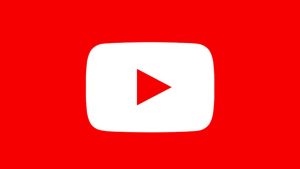Career development is a process that allows individuals to assess their skills and interests, explore job options and develop a plan for reaching their goals. This involves learning new skills, gaining experience and getting mentoring.
Offering career growth is one of the best ways to keep employees happy at work. Studies show that workers who don’t see a path for advancement are more likely to quit their jobs.
- Self-Assessment
Taking time to reflect on your skills, strengths and interests and how they relate to different types of careers is an important step in the career development process. There are many tools and self-assessments available that can be administered without the intervention of a trained professional.
A successful self-assessment can lead to a clearer understanding of your transferable skills. This knowledge is invaluable in developing resumes and preparing for interviews. In addition, it allows you to speak more confidently about your abilities and to provide more insightful answers to questions about past work experience.
In addition, it’s a helpful tool for determining whether or not a change in career direction will support your long-term goals. This will prevent you from making a lateral move from one unfulfilling job to another.
- Goal Setting
Setting goals is a key component of career development. It allows employees to take control of their professional path rather than leaving it up to a manager to decide for them. It also encourages them to seek out the learning and growth opportunities available to them, both in the workplace and beyond.
Using the SMART framework can help them set specific, trackable, achievable and realistic goals that they know they can achieve. For example, if one of their goals is to get a promotion, they can pursue training courses, shadow someone who already has the role and otherwise work on the skills they need to be eligible for it. Having an inspiring goal like that can keep them motivated when challenges arise. They can also remind themselves why they are making these efforts.
- Action Planning
As you move closer to your career goals, creating and using an action plan is a great way to keep track of what you need to do to reach them. This plan should have a clear goal, with a list of steps you need to take to complete each task that will help you get there.
Be sure to include any barriers that might get in your way, along with workable solutions. Also, be sure to celebrate any successes you make along the way, as these can open up new possibilities that weren’t there before.
You can also talk to your manager about your goals, as companies tend to be supportive of employees who want to grow professionally. Check in with them regularly and see if they have any ideas that can help you move forward.
- Implementation
In order to help employees reach their goals, a career development program needs to be implemented. It’s important that the program takes employee feedback into account to build a program that fits their needs. It’s also a good idea to write the program down, as research shows that people are 42% more likely to accomplish their goals when they have them written down.
Additionally, it’s crucial to communicate with employees and managers about how the career development program will work. This will make them feel that the company cares about their growth and wants to support them in their career journey. It will also create congruency within the organization. One study found that companies with career development programs have higher retention rates than those without them.
- Refinement
For career development, it’s important to keep the lines of communication open with employees. Your employees’ interests and goals will inevitably change as they try new things, take courses, and grow in their professional identities. Having the ability to talk to their manager about these changes can help them feel confident in moving forward with their careers.
During backlog refinement, teams should focus on eliminating risks/uncertainty by ensuring Backlog items are clear enough to be understood and sized correctly. When teams don’t size stories correctly, they risk overestimating high-value features and wasting effort on low-value features.
It’s also important to note that during Refinement, work should not be allocated to individual team members. That should be done dynamically during Sprint Planning. This ensures that teamwork is balanced and helps to order the Product Backlog efficiently.



